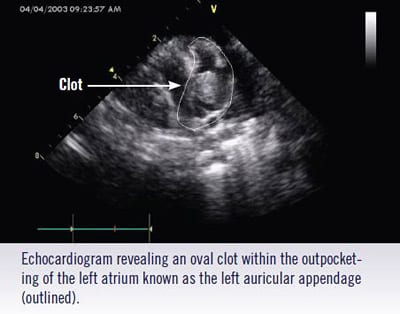Feline Arterial Thromboembolism
What is Feline Arterial Thromboembolism (FATE)?
- Arterial Thromboembolism in cats is one of the most devastating consequences of cardiac disease in the feline patient.
- It occurs secondary to an enlarged left atrium seen commonly in feline heart disease resulting in poor blood flow.
- Blood clots can form within the left atrium. These clots (emboli) can break loose and enter the body’s circulation resulting in complete blockage of blood flow to limbs, other organs or the brain.
What happens with Feline Arterial Thromboembolism?
- Most commonly the clot will exit the heart, travel down the aorta, and lodge in the iliac arteries resulting in complete interruption of blood flow to the rear legs.
- Cats will develop a sudden onset of weakness and an inability to use the rear legs often accompanied by pain, vocalization, and respiratory difficulties.
- This is a medical emergency and prompt veterinary care should be obtained.
- Clots can potentially travel to any part of the body.
- Clinical signs can vary including front limb lameness, inappropriate mentation, or even sudden death.
How is Arterial Thromboembolism in cats prevented?
- If your cat has an enlarged left atrium, your cardiologist may prescribe medications to help prevent the occurrence of an inappropriate blood clot (most commonly Aspirin and/or Clopidogrel (Plavix)).
- Choice of medication is dependent on the individual patient’s risk factors.
- There are likely certain genetic factors that affect your cat’s risk for forming blood clots. Some of this is sadly unpreventable and beyond current medical therapies.
What is the prognosis?
- If the clot enters the circulation, the overall prognosis for the patient is poor.
- With aggressive medical therapy and supportive care to control pain, treat heart failure if present, and promote circulation data suggests that 15-50% of cats can survive an initial clot event.
- The road to recovery in these patients can be long and we are unable to predict how quickly or completely an individual cat will regain function of the affected limb(s).
- Some cats that survive the initial episode will never have an additional event, however, most cats will have another clot event within 6-12 months despite aggressive anti-platelet therapy.
- Our goal is an open collaboration with you and your primary care veterinarian in order to optimize the quantity and quality of your feline companion’s life.




